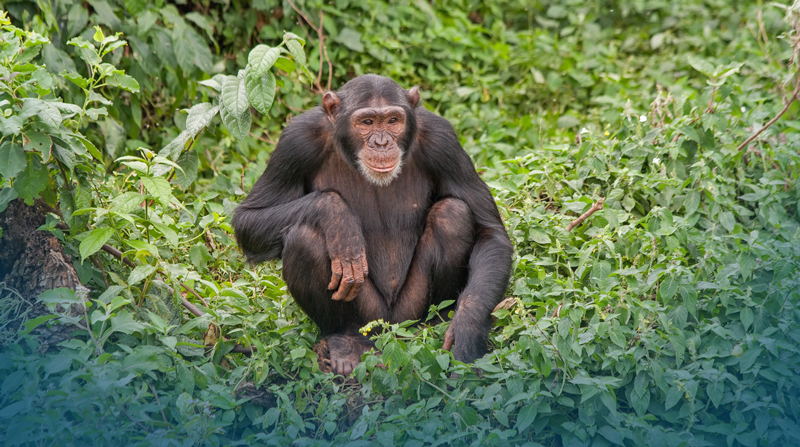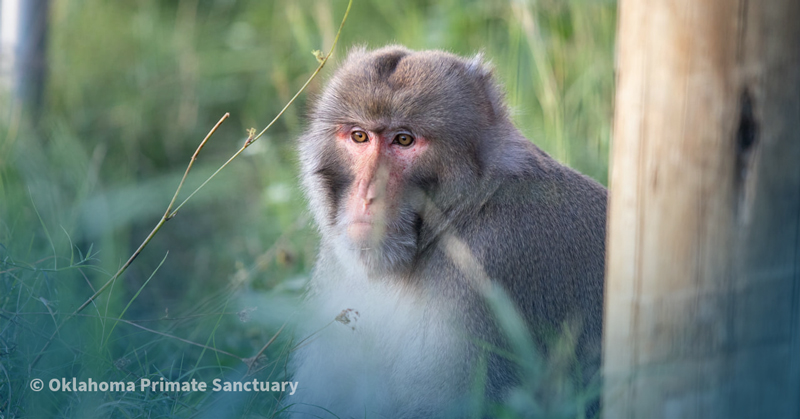| | | | | NEWS HIGHLIGHTS October 2021 |  Tell Congress:
NIH Bias Keeps Chimpanzees from Sanctuary! Despite many years of funding experiments and causing untold suffering, the National Institutes of Health (NIH) is once again denying sanctuary to chimpanzees who have been retired from research but still remain in laboratories. On September 29, after two years of review, NIH announced that 49 (or as many as 51) chimpanzees living at the Keeling Center for Comparative Medicine and Research in Texas will not be retired to the world’s largest chimpanzee sanctuary, Chimp Haven, claiming that transport “may be unsafe.” Similarly, two years ago, NIH made the decision to not relocate over 40 chimpanzees who have been languishing at the Alamogordo Primate Facility (APF) in New Mexico for decades. After all they’ve been through, these chimpanzees deserve a chance for a natural life! According to an NIH release, the agency applied the same “standard criteria” that was used to evaluate the health of the chimpanzees at APF. This criteria, however, does not include consideration of how living in a sanctuary environment can benefit these chimpanzees. Additionally, a so-called “independent panel of veterinarians,” employed by NIH, was relied upon to evaluate the health records of chimpanzees who the lab labeled unfit for relocation. While the panel did consult with some outside experts, it did not include discussion with ethicists, who could more objectively weigh the potential benefits and costs of relocating the chimps. It’s not surprising that, in both circumstances, the panel of NIH veterinarians agreed with the laboratories that the chimps should not be moved. This also will allow these labs to continue receiving NIH financial support for the chimpanzees. Caring for hundreds of chimpanzees formerly used in research, Chimp Haven has the expertise to meet the special needs of these animals. Chimp Haven explains: “we’ve seen the health and behavior of many chimpanzees improve, including those who are geriatric, fragile, and came to the sanctuary socially challenged. We firmly believe sanctuary life is the best place for chimpanzees formerly used in biomedical research.” The path to chimpanzee retirement is not over until every chimp is in a sanctuary. Contact your legislators and urge them to demand that NIH relocate ALL retired chimpanzees to the Chimp Haven sanctuary. |
|  The Environmental Protection Agency (EPA) has asked the National Academies of Sciences, Engineering, and Medicine to produce a report assessing the variability and relevance of “gold standard” toxicity testing using mammals, like mice, rats, and guinea pigs, for evaluating human health risks from chemical exposure. This is important, since alternative, non-animal methods are typically validated in relation to whether they replicate results in the animal tests. That has delayed implementation of alternative methods that may better predict results in humans. READ MORE » |  The European Parliament has passed a resolution calling for the development of a plan with “ambitious and achievable objectives, as well as timelines for phasing-put the use of animals in research and testing.” The resolution passed with an overwhelming majority of 667 votes to 4. This historic vote expresses the unified desire of elected officials to bring an end to animal testing, and paves the way for advancement of non-animal methods. READ MORE » |  On this podcast, Animalearn’s Nicole Green talks about alternatives to animal dissection and how they can be incorporated into any curriculum. One such alternative, the highly-regarded Anatomy in Clay, is a unique learning system, in which students reconstruct the human body using modeling clay and a skeleton model. It allows students to learn anatomy from the inside out, and has the benefit of hands-on learning. Animalearn is a division of AAVS. LISTEN NOW » | | | |
| | SANCTUARY MOMENT: Oklahoma Primate Sanctuary |  Wallace, the Alpha Many primate species who live in troops in the wild have a leader, oftentimes referred to as the alpha, the highest ranking group member. Although Wallace spent the first part of his life in a laboratory, upon arriving at the Oklahoma Primate Sanctuary (OPS) four years ago, he quickly emerged as the alpha of his family group of five male rhesus macaques, all retired from research. According to the folks at OPS, Wallace is an outstanding leader and is quick to resolve any disagreements that may occur between his friends. Great job, Wallace! We’re so happy that Wallace and his group mates can exhibit many of their natural social behaviors at OPS. In a laboratory setting, primates cannot often exhibit their normal, wild behavior or engage in a lot of social interaction. Caring for over 100 primates, including many who were once used in research, the Oklahoma Primate Sanctuary has enjoyed generous support from AAVS. If you’d like to see more of Wallace and the other primates at OPS, check out their social media! LEARN MORE » | | | | | | |